Most business blogs take months, if not years to become successful. You have to keep publishing new content constantly, optimize for SEO — and make sure you’re up to date on new strategies — and stick it out over the long term.
Until now, that’s been the standard way businesses have built their blog.
But recently, there’s a new option that has come about — a platform with a massive, built-in, targeted audience whom you can reach with your content on a daily basis. A platform that can help give your content the “push” it needs to go viral and generate tens of thousands of leads for your business in a matter of months.
That platform is Medium, launched by the co-founders of Twitter.
Mobile version:

Desktop version:
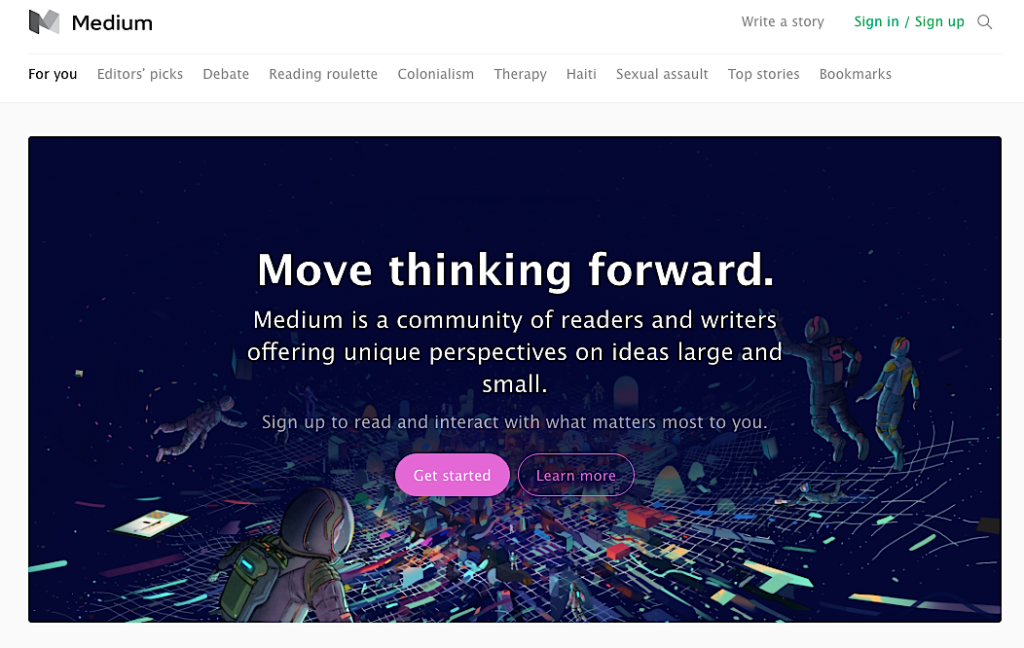
One of the biggest advantages of leveraging Medium over normal blogging strategies is that you don’t need to rely on social media promotion or backlinks to get your content in front of more people.
Some of Medium’s publications have over a hundred thousand followers — and you have the opportunity to get your content pushed out to all of them. You just have to write a blog post on the platform and submit it to the owner of the collection.
Depending on what your business does, there are tons of different publications with large targeted audiences that you can choose from.
- If your customers are mostly entrepreneurs, you can target them through The Startup.
- If your content is for professionals who are into personal development, you can target them through The Mission.
- If you’re targeting marketers, you can push your content to them through Marketers and Growth Hackers.
This is completely different from publishing a normal blog post on your site and promoting it through your social media channels. When you do it this way, the only people who see it are those who follow you on social media or search for your specific post topic on Google.
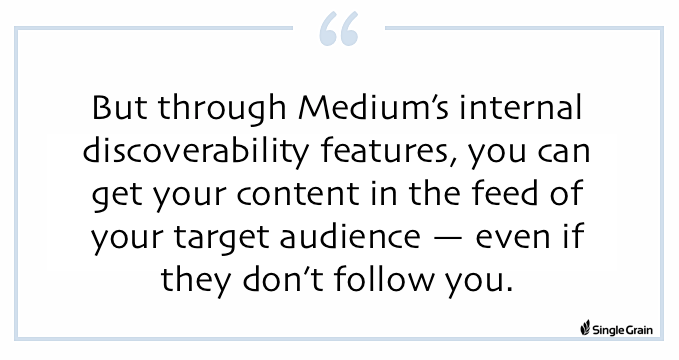
To get a sense of the kind of traction that marketing-related posts get on Medium, here’s a list of some of Buffer’s Medium posts, along with their number of views, reads, read ratio, and recommends:
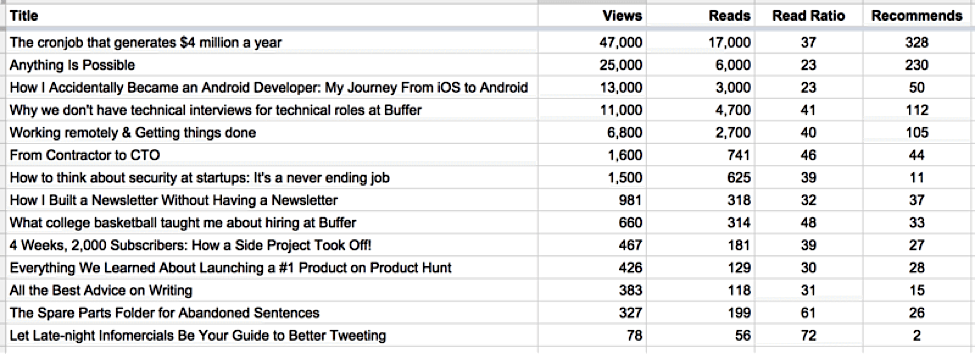
According to Mike Essex, within 6 hours of publishing on Medium he found that he had surpassed the average number of views a post on his own site would get in its entire lifetime. And within 24 hours, those numbers quadrupled.
In terms of promotion, he did all the same things he would normally do for his blog posts: promote through tweets and through his Google+ page.
Here are just some of the results that I saw with my own Medium posts:
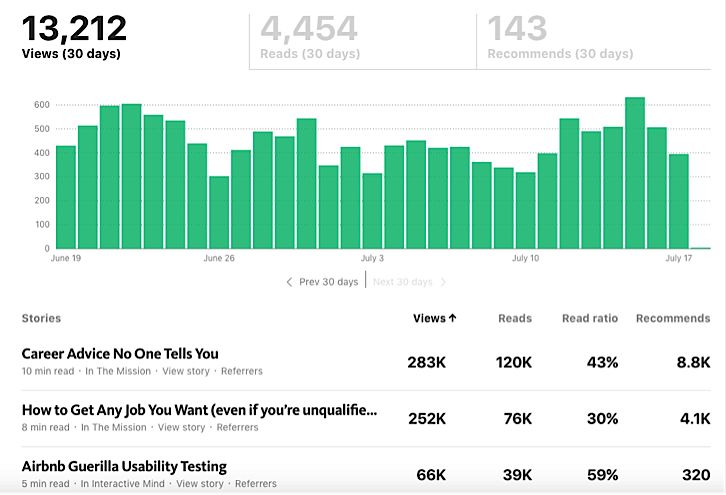
Medium’s audience mostly consists of highly-educated, tech-savvy people. In addition:
- 95% are college graduates
- 43% earn six figures or more
- Over half are between 18 – 34 years old
- 70% are under 50
Medium has seen big name celebrities as well as global brands publish blog posts on the platform, too: Leonardo DiCaprio, Barack Obama, BMW and Marriott have all published on Medium.
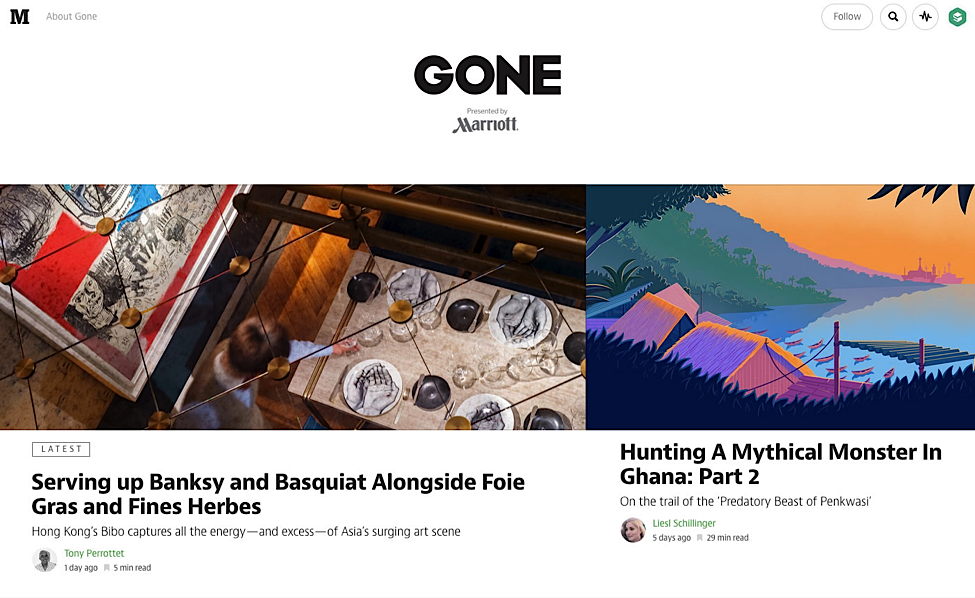
Source: Sharethrough
You can also expect a higher engagement rate on your Medium blog posts compared to content on other platforms. According to Riddhi Shah, head of creative strategy at Medium, readers spend an average of two and a half minutes on every Medium story. Chartbeat estimates that people spend only one to one and a half minutes reading a news article on other sites.
Keep reading and we’ll give you some advanced strategies to use Medium to generate more leads and grow your business.
Incorporating Medium into Your Marketing Strategy
It’s easy to get overwhelmed with all the new marketing advice popping up every day.
You’ve got Medium, high-growth platforms like Snapchat, video marketing, etc. It’s important to stay on top of the latest tactics, but only if you have a systematic way of incorporating them into your overall marketing strategy. In this section, we’ll talk about how to make sure that using Medium will actually help you grow your business instead of just gathering meaningless “likes” or “shares.”
Let’s have a look at this marketing funnel diagram from KISSmetrics:
 Marketing funnels are broken down into various steps to guide potential customers all the way from the “awareness” stage where they first hear about your business to the stage where they’re ready to purchase your products or services.
Marketing funnels are broken down into various steps to guide potential customers all the way from the “awareness” stage where they first hear about your business to the stage where they’re ready to purchase your products or services.
Learn More: The Ultimate Guide to Creating Your Marketing Funnel
The first step in the funnel generally consists of blog content, paid ads, video marketing, etc., to make potential customers aware of your business.
Next, there needs to be some way for prospects to take action and express interest in your business — usually by signing up for your e-mail list in exchange for an opt-in incentive. This is the best way to begin building a relationship with your audience after the “awareness” stage.
Here’s an example of how HubSpot transitions people from the “awareness” stage to the “interest” stage:
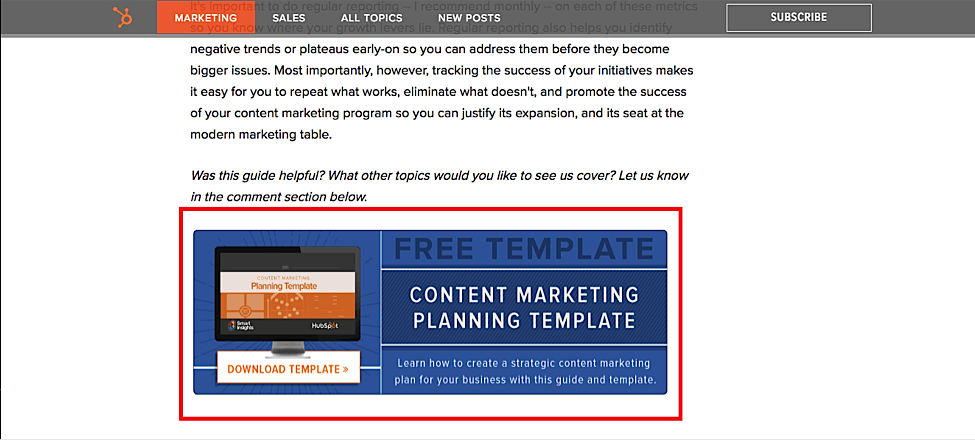
When potential customers are on your e-mail list, you can then build a relationship with them over time through an autoresponder sequence until they’re ready to make a purchase.
Medium is a great tool to build more awareness for your business. Through Medium’s internal discoverability features, you can get your content in front of a large targeted audience without any extra effort on your end. You can include a link at the bottom of the post encouraging them to subscribe to your e-mail list in exchange for an opt-in incentive.
Here’s an example of how one of Medium’s top writers, Benjamin Hardy, got over 20,000 people on his e-mail list within six months:
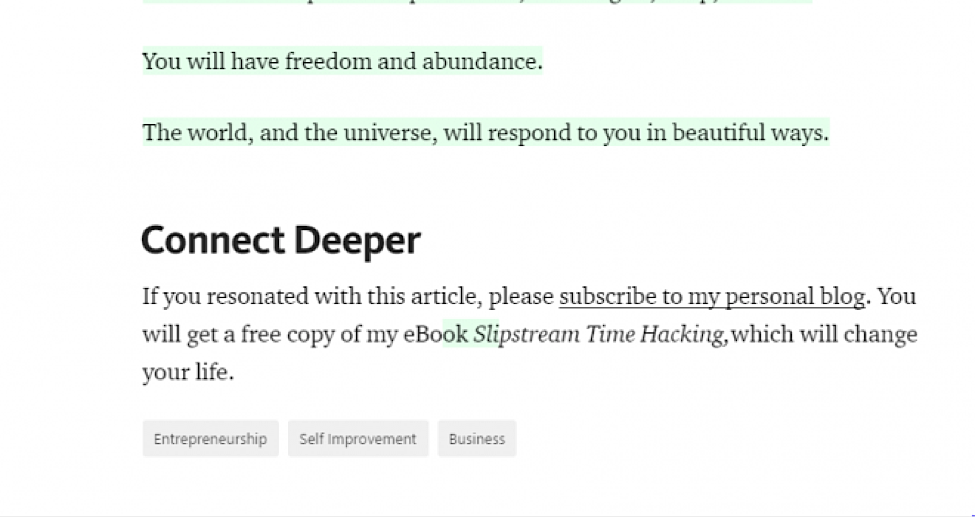
Once they’re on your e-mail list, you can push your leads through your autoresponder sequence until they’re ready to make a purchase from you.
At a high level, that’s how Medium can fit within your marketing funnel to help you generate more leads and more sales for your business. Now, let’s dig into how to execute on this strategy step by step.
Step 1: Make a List of Your Target Publications
The main benefit of Medium is that you can get your content in the feeds of hundreds of thousands of the right people, even if they don’t follow you, and the way to do this is by submitting your posts to the right publications.
Those who don’t do this miss out on what Medium has to offer. If all you do is write posts on Medium and publish them to your own profile, you won’t get any more benefits than just posting on your own personal blog.
For example, check out the number of “recommends” on this post that was published directly onto the writer’s profile.
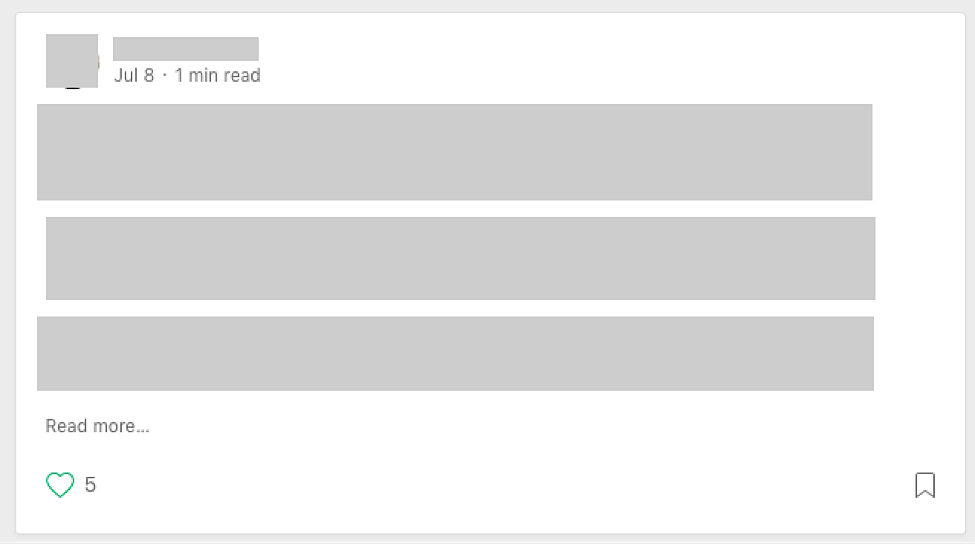
Now compare that to the number of “recommends” on James Altucher’s post after he published it to one of the largest publications on Medium — The Mission:
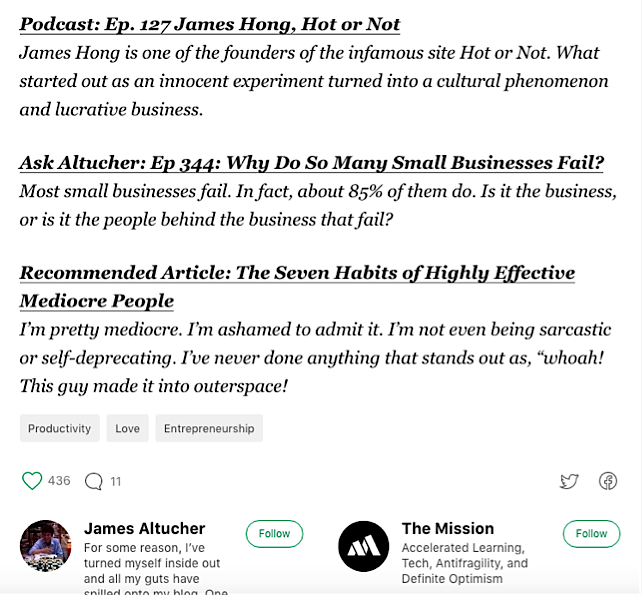
When you publish a post on your own profile on Medium, it only appears in the feeds of those who follow you. This is similar to publishing a tweet or a post on Facebook.
However, when you submit a post to a publication, it gets sent to the feeds of all of its followers. Followers also get a digest e-mail with stories from that publication.
For example, The Mission has over 130,000 followers. That means that any posts that are published there get sent to over 130,000 people.
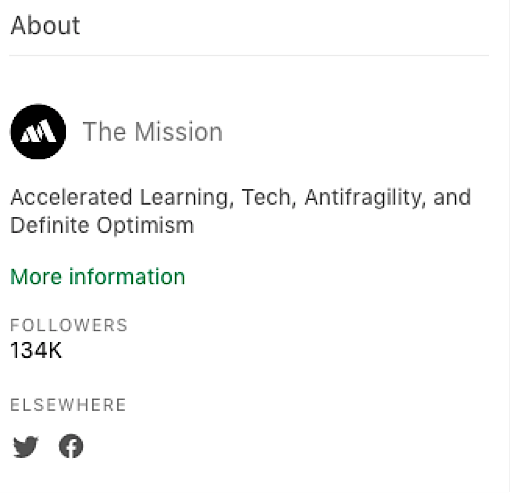
And every time someone “recommends” a post, the post becomes visible to that person’s followers as well — so you can see how publishing to publications on Medium can make your content go viral relatively quickly.
Before you begin posting content on Medium, you’ll want to make a list of the best publications on the platform with your target audience.
For example, let’s say your target market consists of startup marketers. In that case, you could search “marketing” in Medium’s search box and click on “publications.”
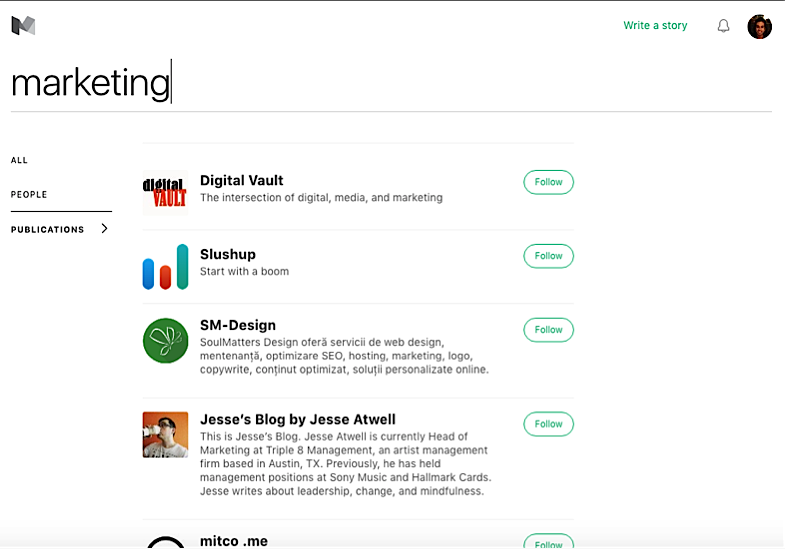
From there, you can see a list of all the publications on Medium that are related to marketing.
If you click on the Marketing and Growth Hacking publication and scroll down, you can see how many followers that publication has:
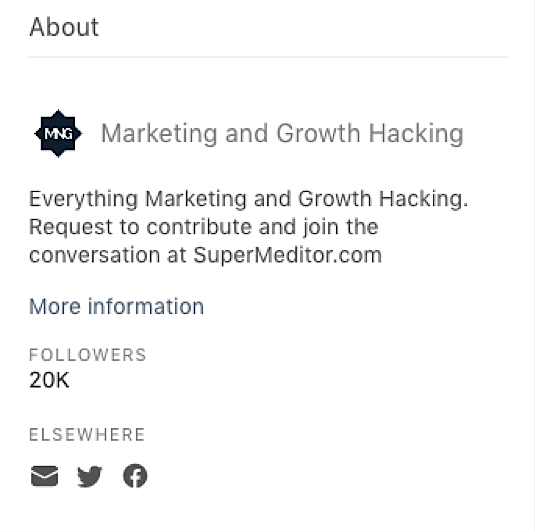
Medium doesn’t currently have an option to filter search by the most followed publications, but posts like this one that curate lists of popular collections can help you narrow your search relatively quickly.
Step 2: Craft a High-Quality Post for Your Target Collections
Once you find a few collections that fit the audience that you’re going after, it’s time to write a post for them.
Because writing is a creative process, this step is much less formulaic compared to others. But there are still some general guidelines you should follow when writing for Medium.
According to Buffer, SEO headlines are less common on Medium than other blogs on the Internet because content is built to be found within the network rather than in organic search.
Because of that, the top posts on Medium have a wide variety of headlines. They include “how to” posts, headlines with full sentences (i.e. I Almost Let My Failed Startup Destroy Me), short headlines, and extremely long headlines.
The average headline length is 42 characters for Medium’s top stories. They also looked at the average length of a “top 100” Medium post, which is about 7.25 minutes with the median being under 6 mins.
According to Medium’s data science team, longer posts that take more time to draft tend to get a higher click through rate.
Overall, the formula for writing a high-quality Medium post is similar to writing a high-quality blog post.
- You should start off with a high-level topic that’s relevant to what your audience is looking for (in this case, relevant to the publication you want to post on)
- Write a captivating lede (introduction)
- Organize your post into different sections with clear headers and bullet points for better readability
If you’re struggling to come up with blog post ideas, you can easily gauge what type of content performs well on the publications you’re targeting by seeing what the top stories are and modeling your content on that.
Benjamin Hardy once asked both Seth Godin and Jeff Goins this question: How do you ensure that your work meets your own personal standard of excellence?
Here were their responses:
- Seth Godin: “Plant a lot, harvest a few.”
- Jeff Goins: “I keep shipping. I find that when I stop producing, the quality goes down. A deadline makes me do my best work.”
In essence what they were saying is that quantity is the fastest path to quality. The best way to ensure that you’ll hit content “home runs” on Medium (or any other platform) is to constantly keep publishing. That’s how you get better.
Learn More: Absolutely Everything You Need to Know About 10x Content
Step 3: Link Back to Your Own Site
This is the most important part of the entire process of writing on Medium. Without a proper call to action, you won’t be able to generate leads for your business, and you’ll lose out on one of the biggest benefits that Medium has to offer.
At the bottom of your post, include a small snippet of text asking people to sign up for your e-mail list in exchange for an opt-in incentive.
For example, Benjamin Hardy includes this text at the bottom of his blog posts:
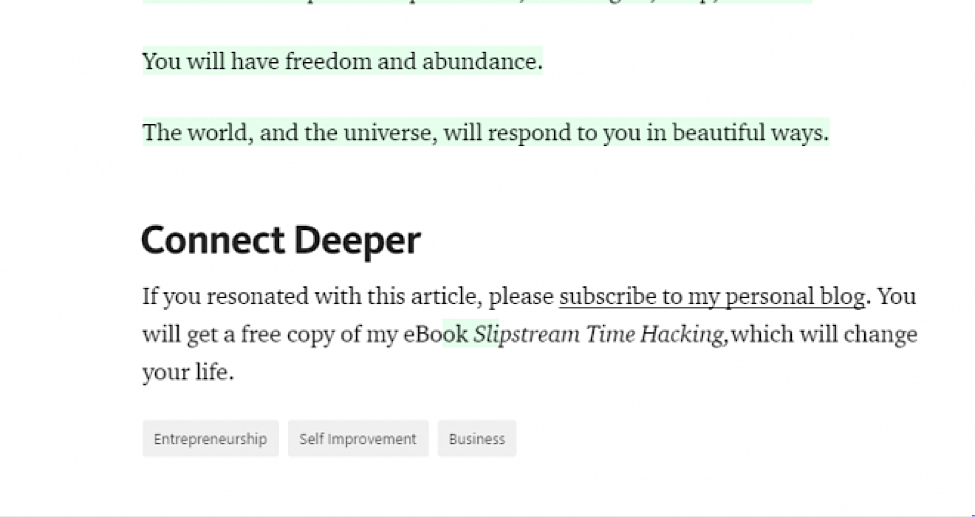
It encourages readers to subscribe to his personal blog in exchange for a free copy of his e-book.
Once readers click on the link, they’ll be taken to a regular landing page where they can enter their e-mail addresses.
You can also use a tool like Rabbut to collect people’s e-mail addresses on Medium, like this writer does:
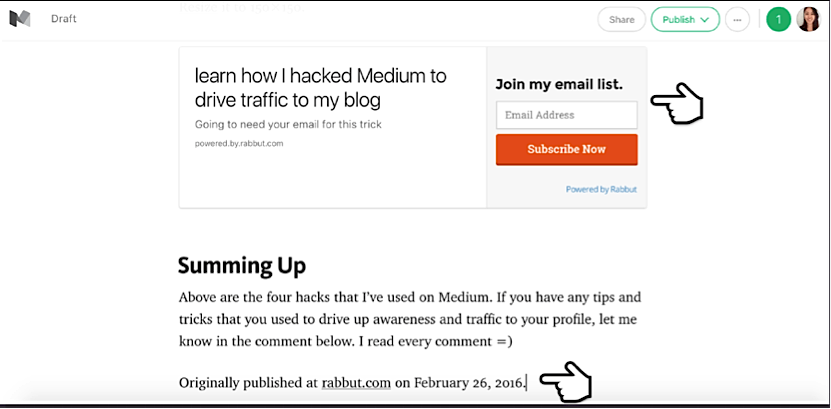
Source: Mostly Blogging
While there are no official numbers on how many e-mail subscribers businesses can get through Medium, there are a variety of them that have had great success:
- Jon Westenberg, one of the top writers on Medium, is building his content marketing agency based on his Medium content.
- Darius Foroux has leveraged Medium to build his own business teaching entrepreneurs how to become more productive.
- Buffer started its own publication on Medium where their team shares their own personal blog posts.
- Benjamin Hardy built an e-mail list of 20,000 people within six months.
Conclusion
For businesses that publish high-quality posts with good CTAs to the right collections, there’s a huge opportunity to accelerate growth through Medium.
It used to be the case that the best approach to building a successful business blog was publishing content on your own site constantly and optimizing for SEO.
However, with tools like Medium that allow you to get your content in front of thousands of people even when you’re just starting out, you can accelerate the growth of your business beyond what was previously possible.
How will your business use Medium?






